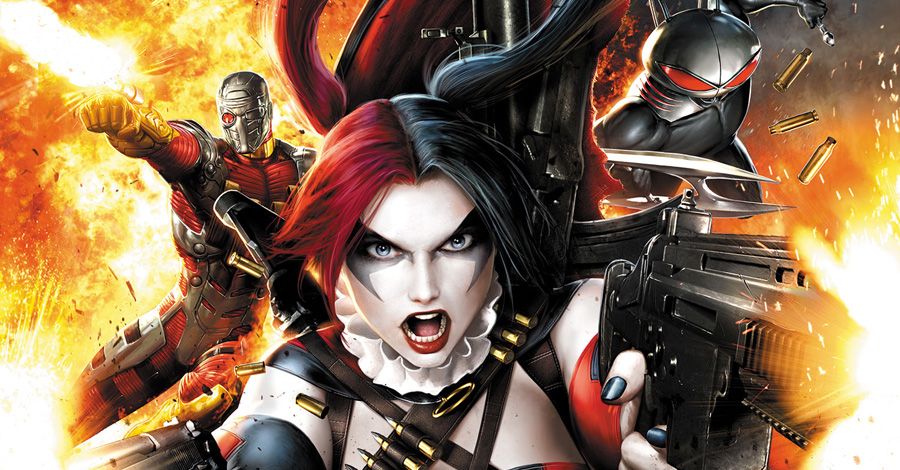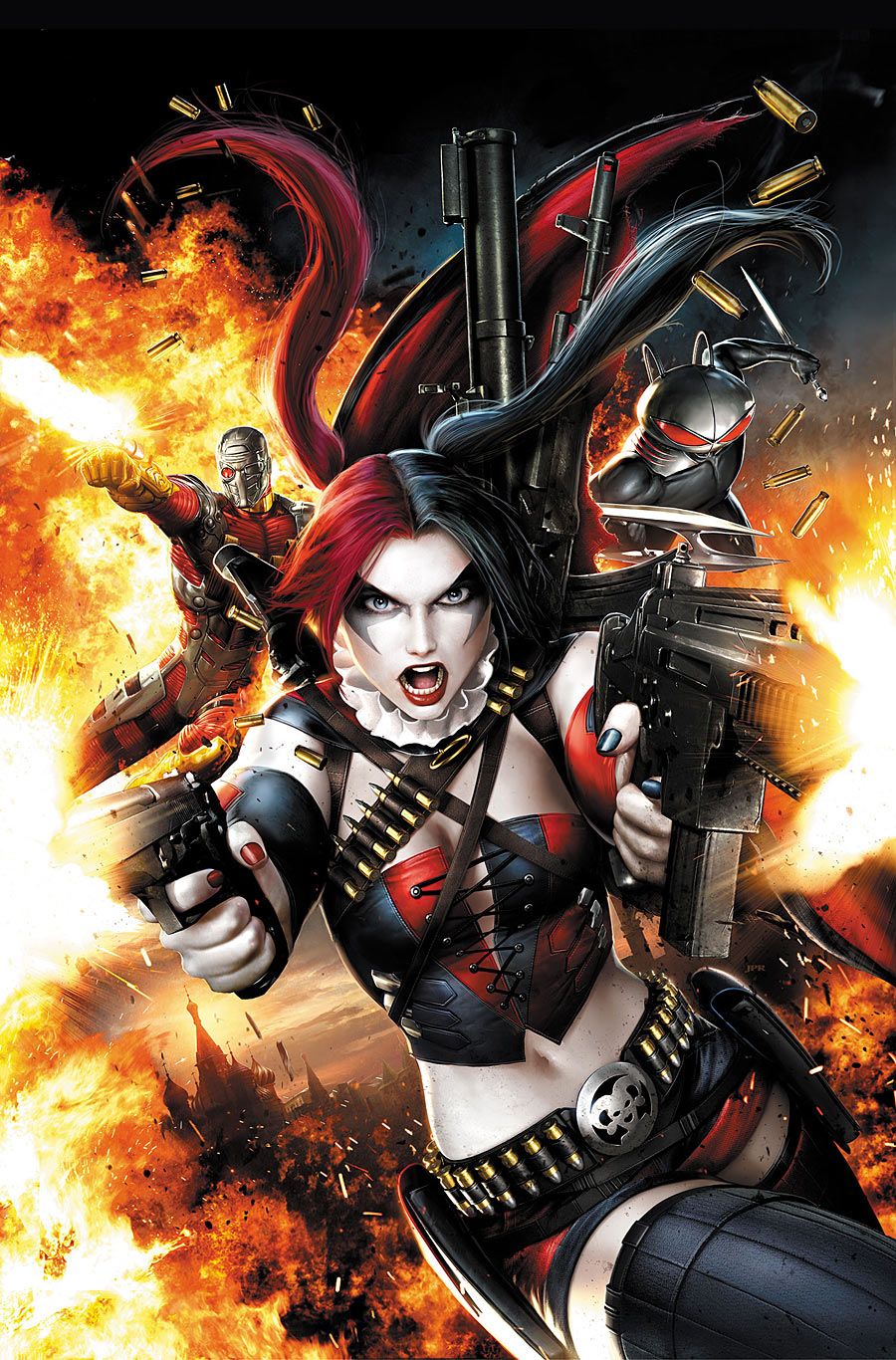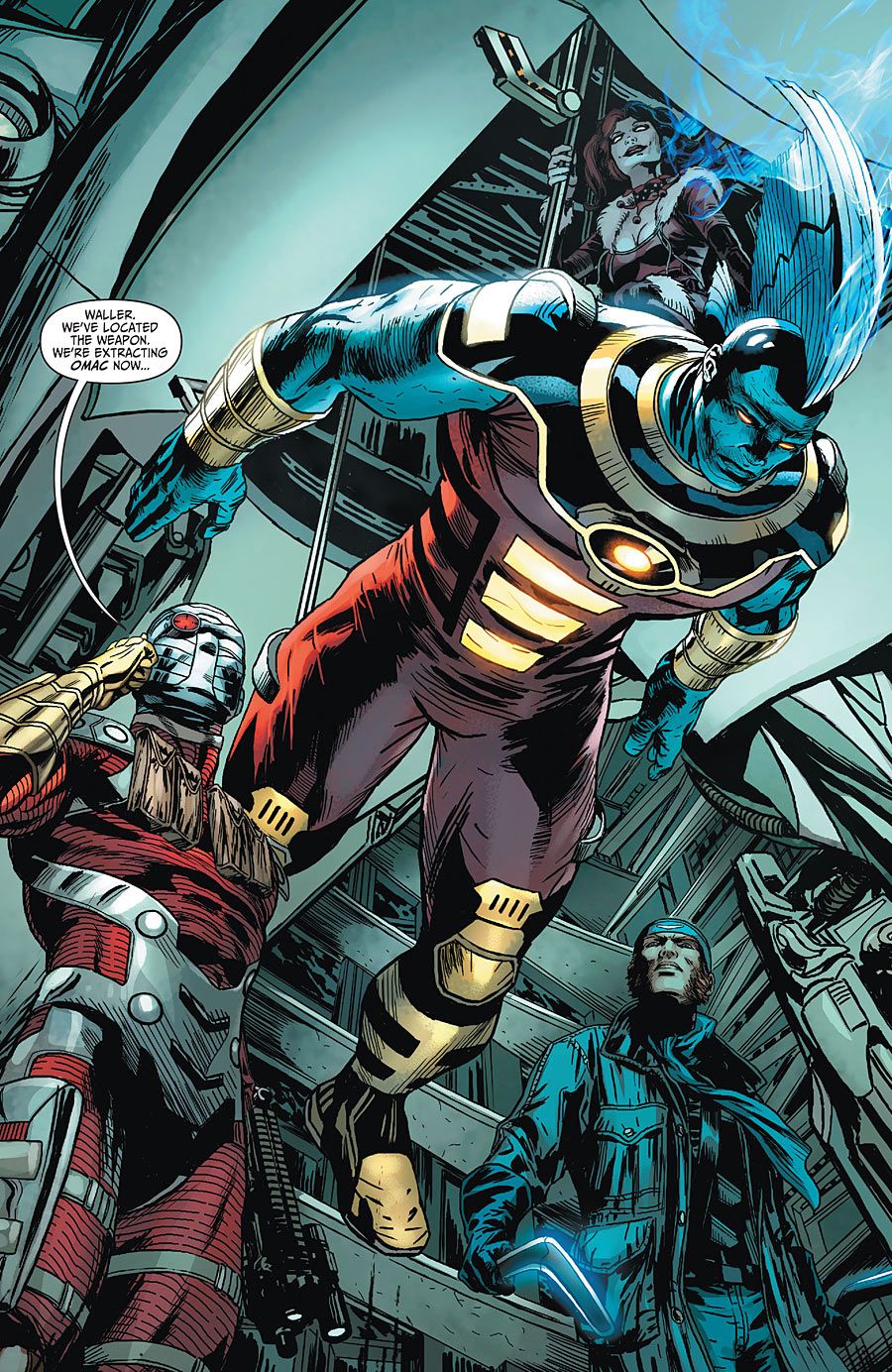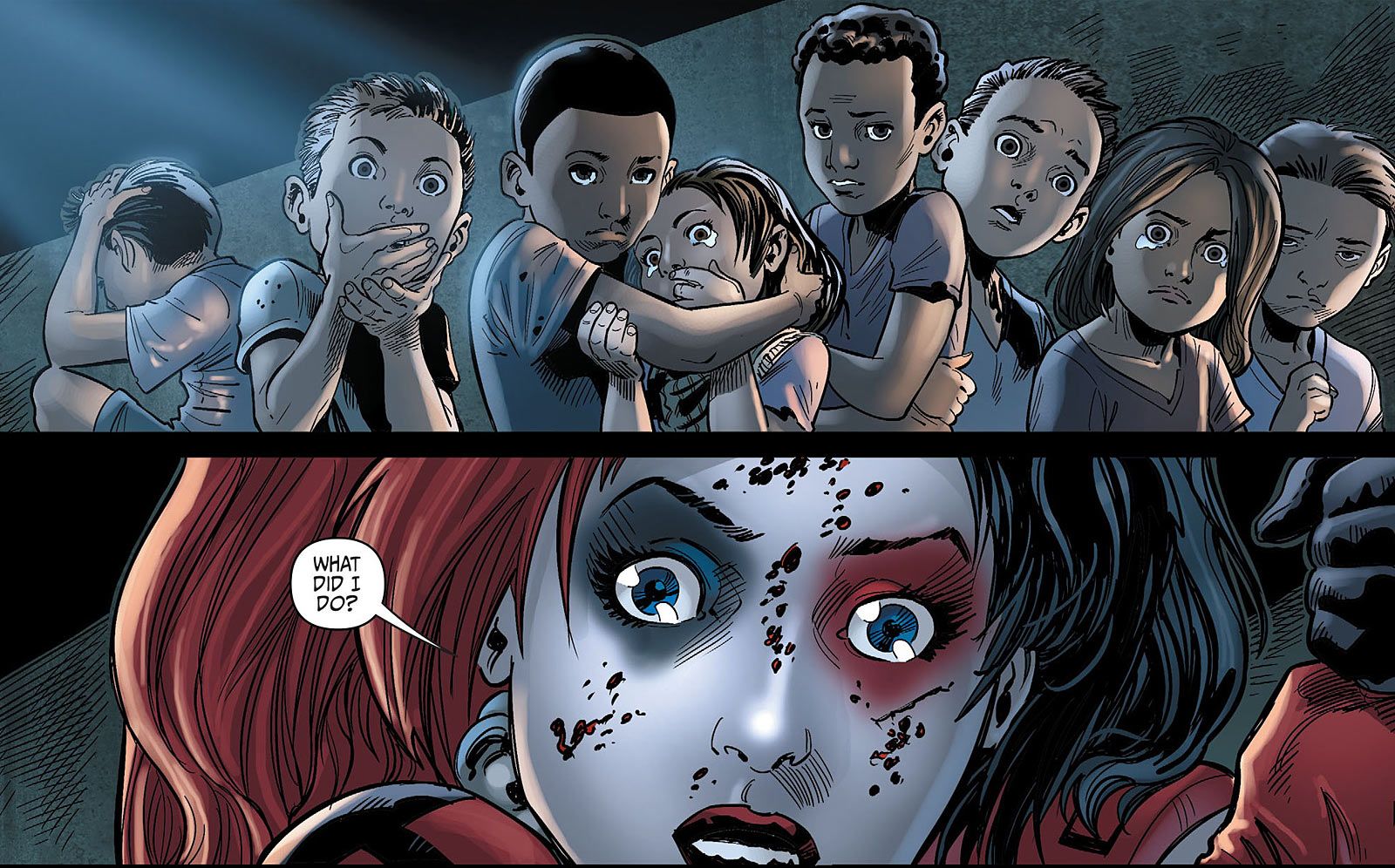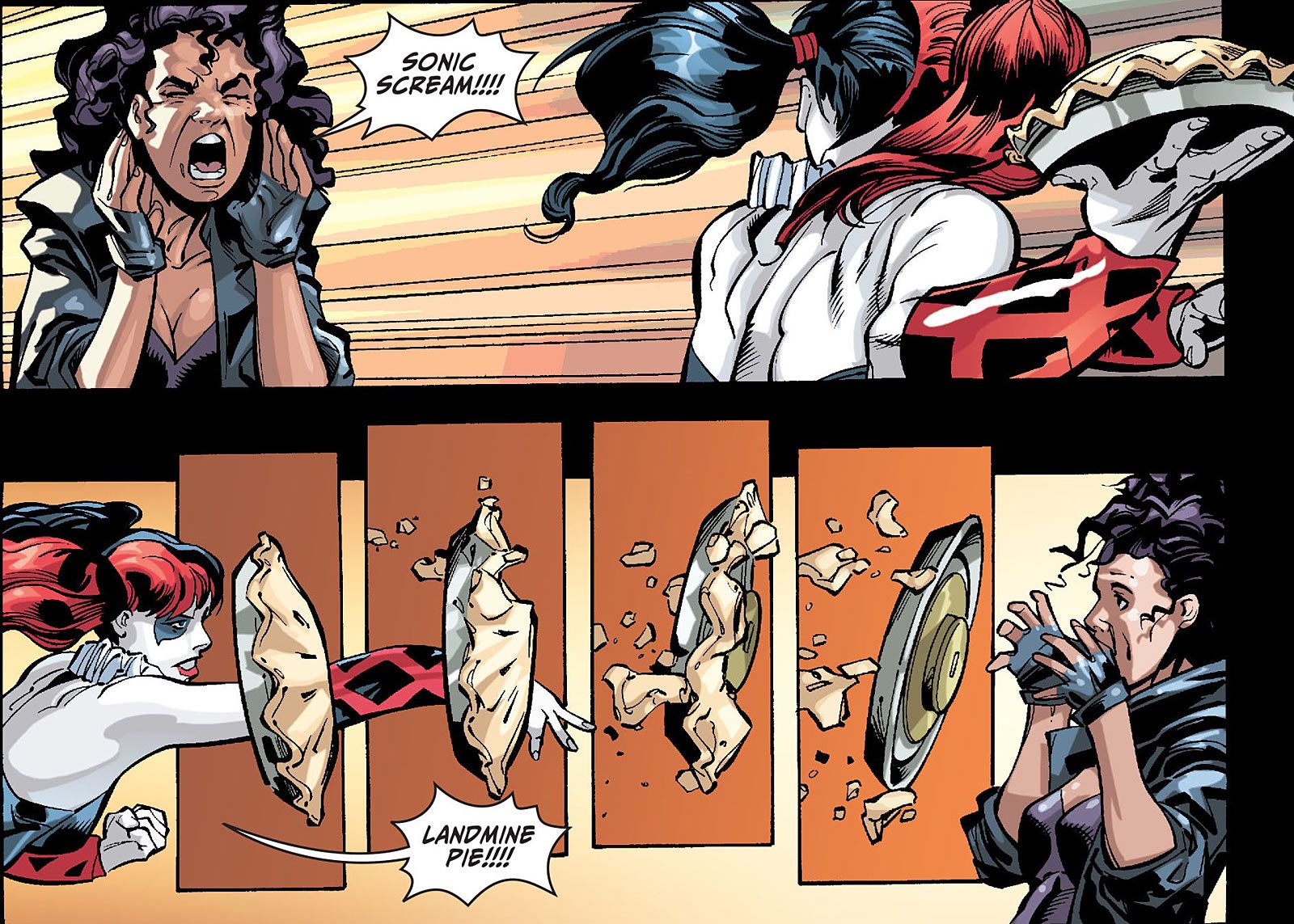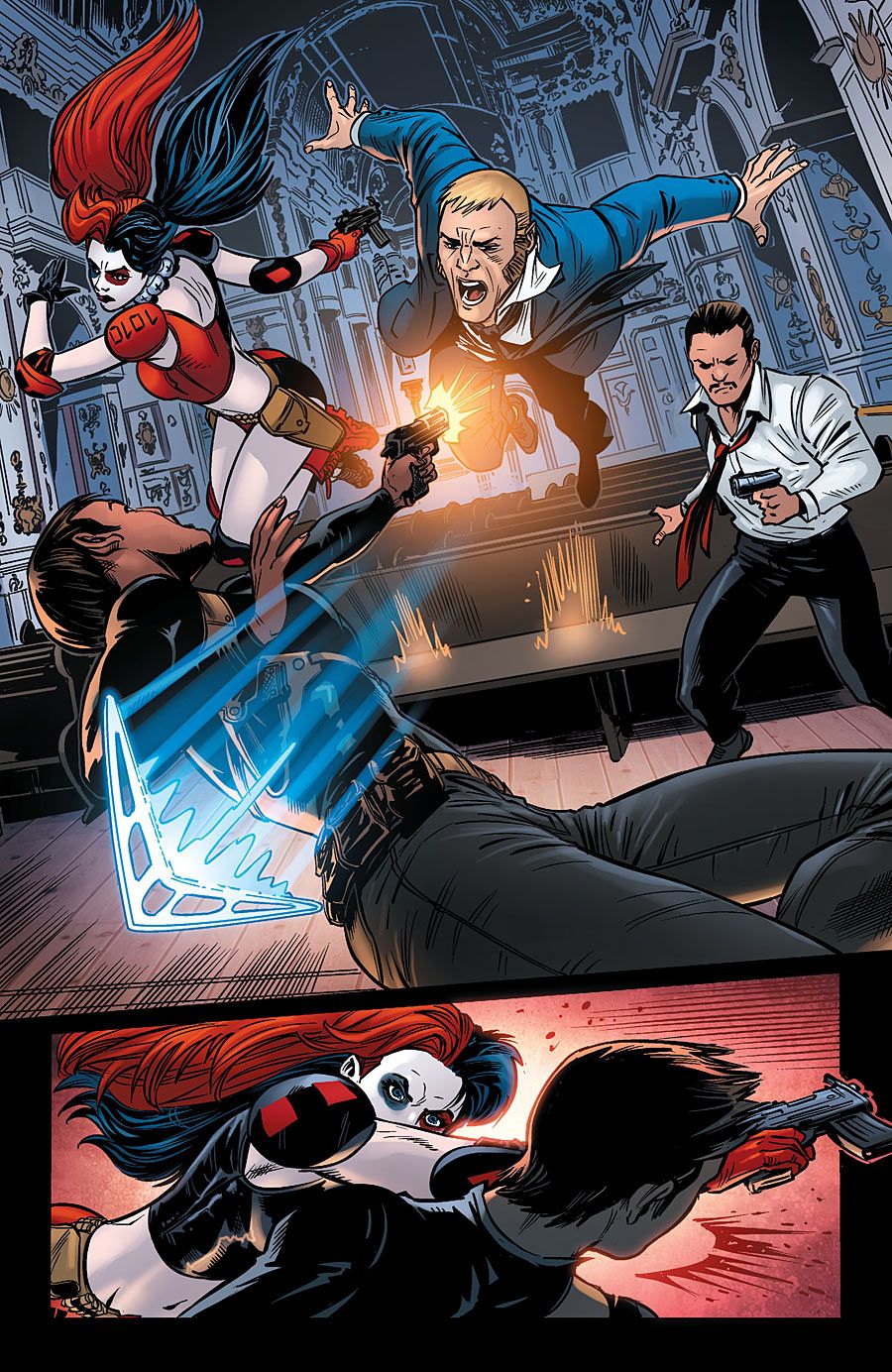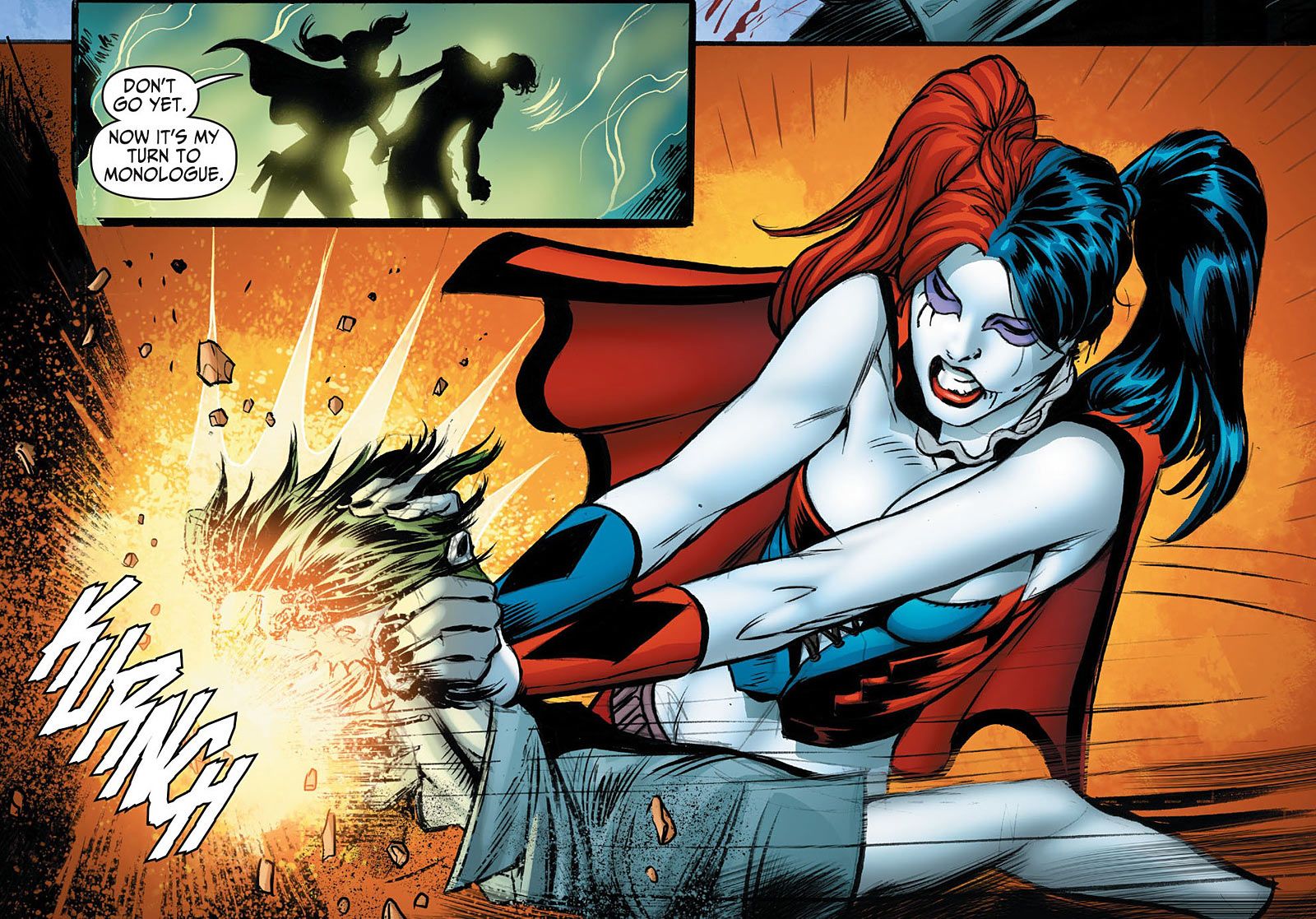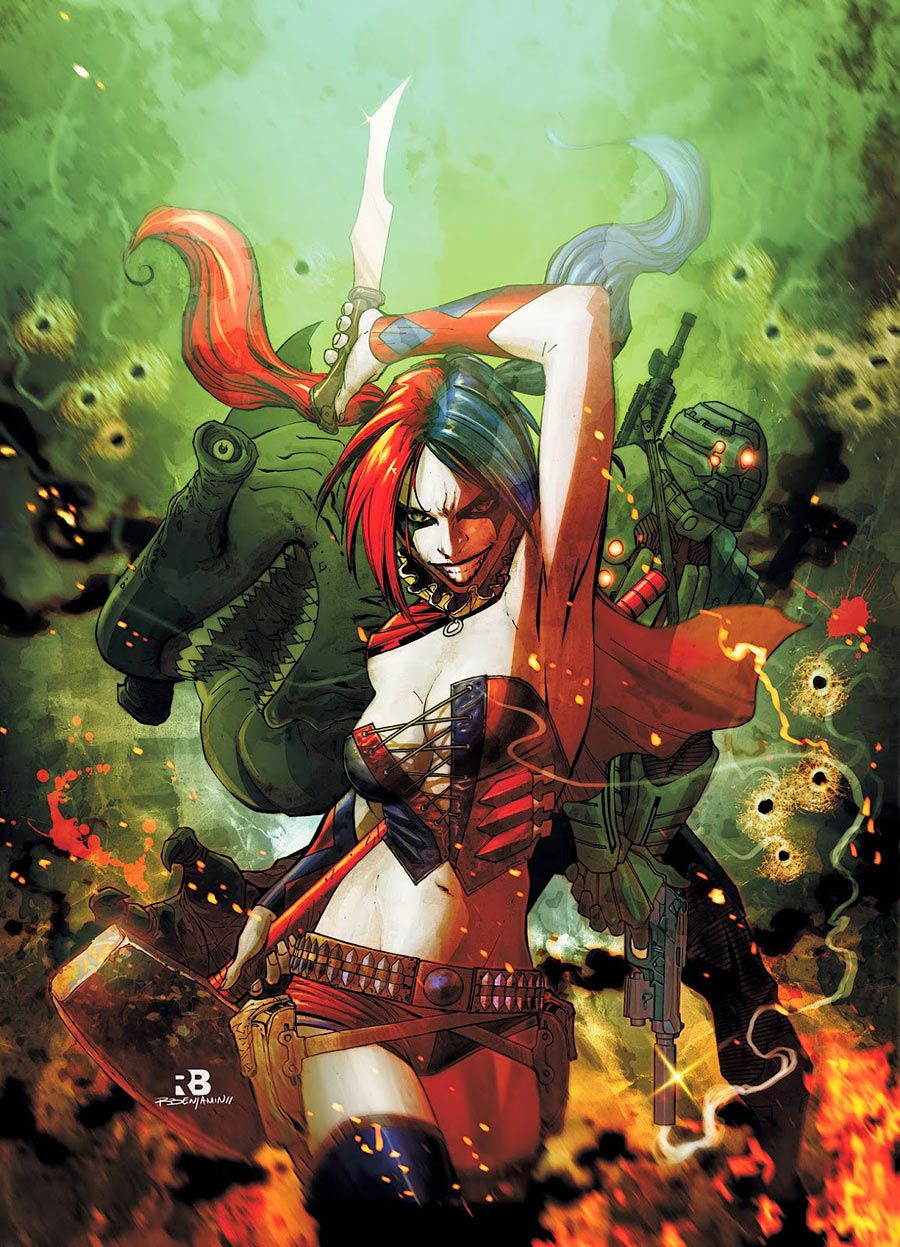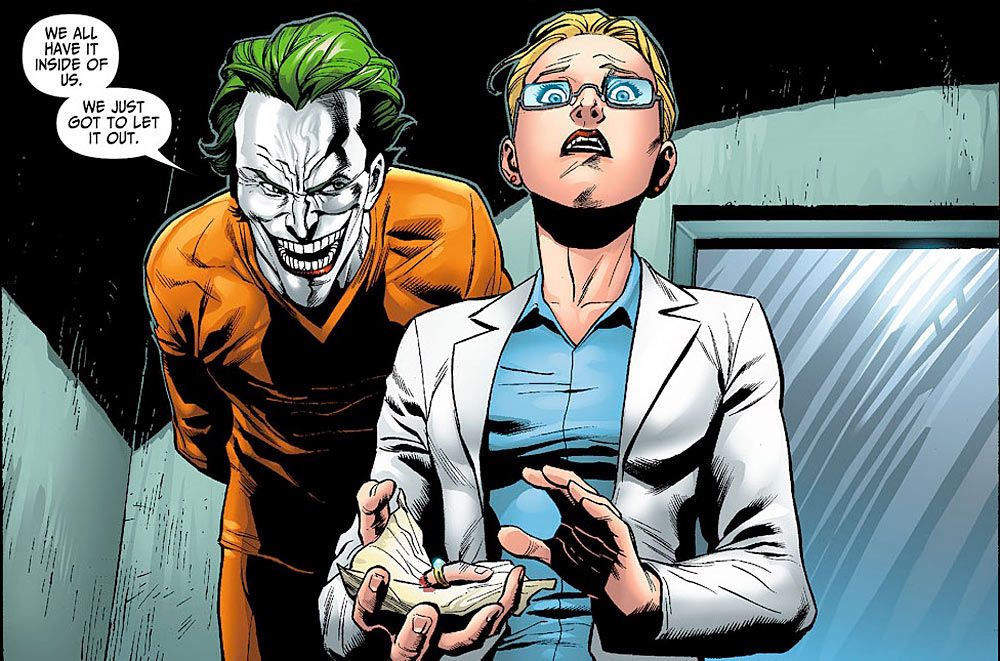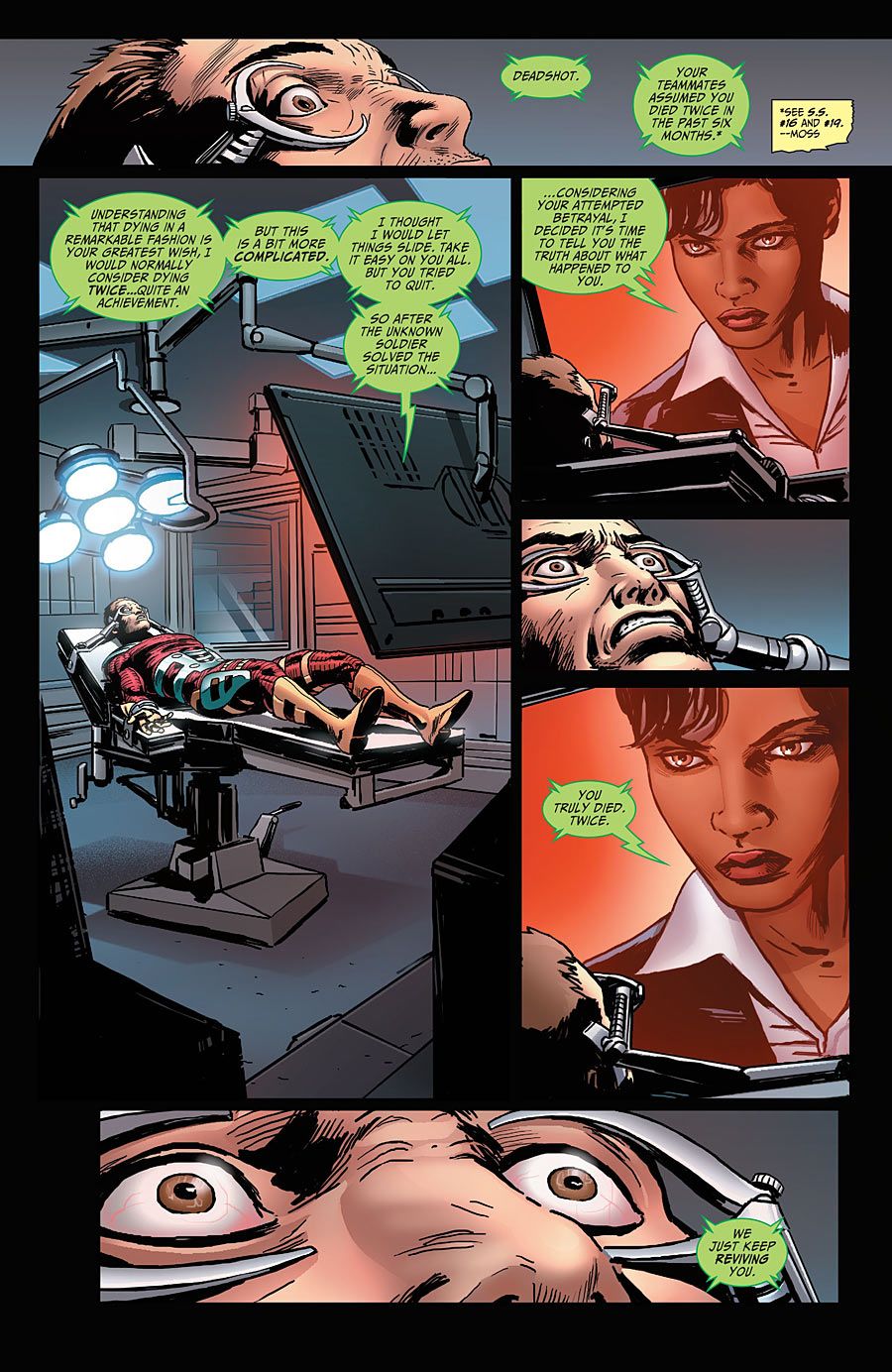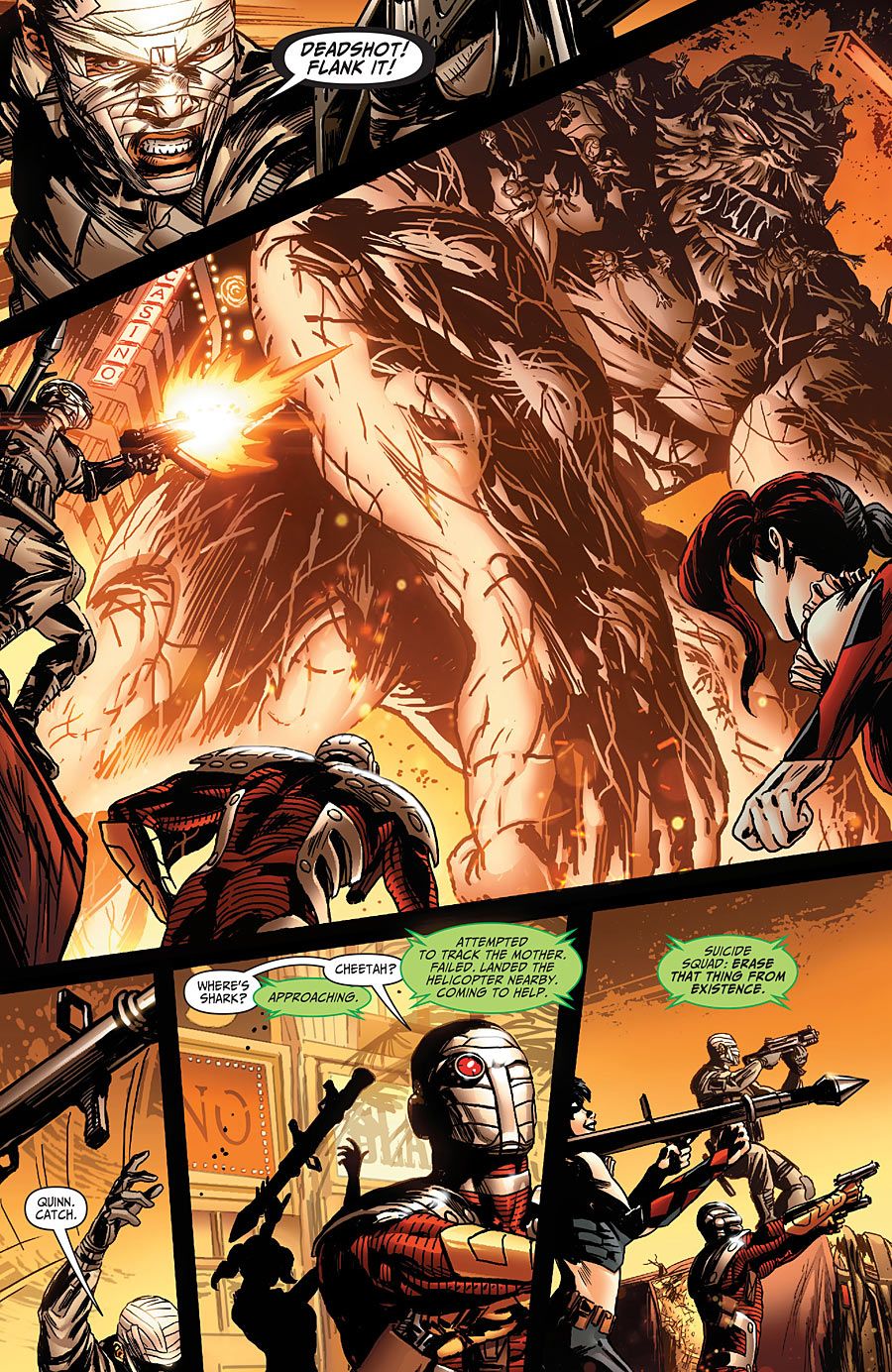The Suicide Squad has had a long history at DC Comics, debuting in "Brave and the Bold" #25 in 1959 by writer Robert Kanigher and artist Ross Andru (exactly three issues before another team debuted in "Brave and the Bold," the much lesser-known Justice League of America). However, Kanigher and Andru's team of four non-powered adventurers (led by Colonel Rick Flag Jr. and his girlfriend, Karin Grace) was not particularly popular. That version of the Squad only appeared in a half dozen or so comic books. It would not be until nearly three decades later that the Suicide Squad would return to stay, with a revamped approach in 1986's "Legends" #3 by John Ostrander, Len Wein, John Byrne and Karl Kesel, now starring a group of super-villains mostly under the leadership of Colonel Flag, but under the overall direction of Amanda Waller. The villains worked for the United States government in exchange for their prison sentences being reduced.
RELATED: "Suicide Squad": 11 Ways the DC Film Can Achieve Its Squad Goals
Ostrander took the idea to a critically-acclaimed ongoing series that he wrote for its entire 66-issues run from 1987-1992. Ostrander's Suicide Squad went on a number of covert missions for the United States government. Ostrander turned C and D-list villains like Captain Boomerang and Deadshot into household names and made Waller and her support staff some of the most interesting characters in comics. Ostrander's run, though, is now over two decades old. The upcoming "Suicide Squad" film, then, is specifically based on the 2011 incarnation of the Suicide Squad, which was re-invented as part of DC Comics' "New 52" initiative. So the old Suicide Squad stories are now out of continuity and a much different Amanda Waller is directing a team of supervillains out of Belle Reve prison, with some familiar faces showing up like Deadshot and Captain Boomerang, but mostly new names, with Harley Quinn being the most famous member of this new team. It's this current series that we're going to spotlight today, with the 10 best Suicide Squad stories since the New 52 began.
10 "Pure Insanity"
"New Suicide Squad" #1-4 by Sean Ryan, Tom Derenick, Jeremy Hunter, Trevor Scott and Blond
Writer Sean Ryan launched a new era of the Suicide Squad with an intentionally dysfunctional new team, as Vic Sage arrived on the scene to help direct the Squad alongside Amanda Waller, and so the new Squad had two "improvements" on current Squad members, as Deathstroke was added to the team to make Deadshot redundant and Joker's Daughter was added to make Harley Quinn redundant. Meanwhile, new addition Black Manta was stuck in the middle. As Sage and Waller struggled for power, the new Squad tore apart while on a mission in Moscow as Deathstroke was quickly bought off by the Russians in the first attack. So right away the mission became a "rescue Deadshot and get out alive" mission. Naturally, the Harley Quinn/Joker's Daughter dynamic did not go over well, either. Ryan established the strengths of the Squad by contrasting them with worse versions of themselves in Deathstroke, Joker's Daughter and Vic Sage. It was a strong start to the new series.
9 "Walled In"
"Suicide Squad" #24-29 by Matt Kindt, Patrick Zircher, Roger Robinson, Rafa Sandoval, Jordi Tarragona, Jason Masters, Carlos Rodriguez, Jim Fern and Wayne Faucher
Set during the "Forever Evil" crossover, the Crime Syndicate of America had freed the supervillains of Earth to assist them in taking over the planet. As a result, Belle Reve prison was destroyed. Amidst the chaos, Amanda Waller put together a new Suicide Squad made up of heroes Steel, Unknown Soldier, Warrant and Power Girl to secure a powerful weapon. As it turned out, though, that was not the real Amanda Waller. The real Amanda Waller put together her own Squad of Deadshot, Captain Boomerang and Harley Quinn to also secure the weapon. As it turned out, the weapon was the powerful cyborg OMAC. The villainous Thinker planned to take control of OMAC and thus tricked the other group into securing OMAC for him. Both Squad teams had to deal with the unleashed OMAC, who eventually did fall under Thinker's control, which was bad news for everybody. Kindt did his normal layered approach with this entertaining story, as he nicely worked flashbacks to Amanda Waller establishing Task Force X into the story.
8 "Monsters"
"New Suicide Squad" #9-12, Annual #1 by Sean Ryan, Phillipe Briones and Blond
This storyline involved a splinter group of the League of Assassins that was no longer content to work in the shadows. They very publicly began to take over large parts of the Middle East. Meanwhile, they were very active in recruiting new members, so the plan was for Deadshot, Black Manta and Captain Boomerang to go undercover as new recruits, with Reverse Flash, Harley Quinn and Parasite being their backup and their exfiltration team. Ryan did a strong job showing the allure of organizations like the League, which we see in real life with ISIS, as Black Manta ended up actually buying into the League's message. This caused him to turn on his teammates. Meanwhile, the rescue team got caught themselves, and Harley Quinn was imprisoned with some young children who were being indoctrinated into being soldiers. When Harley made her escape, she killed so many soldiers in front of the kids that she inadvertently finished their indoctrination. Black Manta ultimately broke free of League control for the worst of reasons (he realized he was too narcissistic to ever be a martyr) and the team escaped before the League could set off a powerful bomb. Reverse Flash decided he could no longer be a monster himself (he and Harley had a great talk where they debated whether a person could ever stop being a monster once they have become one), and sacrificed himself to stop the bomb. The failed mission, though, gave Vic Sage the leverage to kick Amanda Waller out of operations and back into the field.
7 "Slash 'n' Burn"
"Suicide Squad" #23 by Ales Kot, Rick Leonardi, Andy Owens, Derek Fridolfs and Marc Deering
Ales Kot ended his short-lived, but strong while it lasted, run on "Suicide Squad" with this tightly plotted, action-packed perfect example of a Squad mission going according to plan, as Amanda Waller resolved old business set up during the "Team 7" ongoing series, where she and John Lynch worked together for years before Lynch broke bad. Now, chickens were coming home to roost as Waller and the Squad had to step in and prevent Lynch from setting up a dictator with his own personal team of superhumans. Kot worked in all sorts of clever bits into the story, like a sequence involving weaponized pheromones that allowed Deadshot to "defeat" a superpowered female or Harley Quinn's "landmine pie." There were a number of twists and turns and pieces of misdirection in the story as Waller stayed just one step ahead of Lynch in their superpowered game of cat and mouse. We could have read dozens of these types of one-off stories by Kot. Alas, his run ended up just being four issues long.
6 "Freedom"
"New Suicide Squad" #13-16 by Sean Ryan, Phillipe Briones and Blond
With Sage having pushed Waller into the field and out of operations, he had free reign to begin to implement his corporate shadow conspiracy designed to destroy Waller and empower his secret bosses. Waller, naturally, had plans of her own and it involved trying to convince Deadshot, Harley Quinn and Captain Boomerang to work on her side to take Vic Sage down. Part of this involved revealing to them that the nanite bombs implanted in their necks were no longer controlled by Task Force X. They naturally took this opportunity to try to exact revenge on Waller, until she revealed that the nanites were no longer under direct control back in Belle Reve, but that they were now keyed into Waller's own heart rate. If she died, they would explode. So the Squad had to work with Waller as she tried to take back control of the Squad from Sage. Sage, meanwhile, enlisted the help of Black Manta to take out Waller. Besides the strong artwork from Briones and Blond, this story stood out the most for the way that Ryan played with the notion of "freedom." Waller offered the Squad freedom in return for helping her, but they knew that she was lying to them. However, for the members of the Squad, their missions for the Squad were often the only time that they ever truly felt "free," so in a way, she did give them their freedom.
5 "Running With the Devil"
"Suicide Squad" #14-15 by Adam Glass and Federico Dallocchio
After believing that the Joker was dead and coming to grips with that piece of news, Harley Quinn's world was thrown upside down when the Joker turned up very much alive in this two-parter that tied into the "Death of the Family" crossover then going on in the Batman group of titles. The first part of the story was mostly just an exposition-driven tie-in to that series (a lot of "see 'Batman' #13 to see what Harley Quinn did after this panel" or "read 'Batman' #14 to see where Harley Quinn went next"). The second part, though, was all about Harley Quinn and the Joker having it out. The Joker had always had control over Harley Quinn's life -- does that power continue now? The Joker believed that, deep down, Harley Quinn was just like him. Was he right? For her own sake, Harley had to answer both questions in the negative. At the same time, though, she had to escape the Joker, period, as he locked her up and revealed that he had had previous "Harleys" in his life. They didn't make it, but this Harley Quinn would.
4 "Kicked in the Teeth"
"Suicide Squad" #1-5 by Adam Glass, Federico Dallocchio, Cliff Richards, Andrei Bressan and Ransom Getty
The new Suicide Squad was introduced in this opening arc of the New 52 series. After a quick first issue introducing the team members, the team went right into a dangerous mission where they rescued a baby from a stadium packed with 60,000 people infected with a techno-organnic virus that the Squad had to kill to prevent the virus from spreading. Deadshot, Black Spider, King Shark, El Diablo, Harley Quinn and Voltaic were the original team members. They discovered that a terrorist group known as the Basilisk was after the virus. They rescued the baby, but not before Deadshot was infected by the virus. After losing Voltaic, they went right into another mission, now joined by Captain Boomerang and Yo-Yo, to acquire a doctor who was an expert on viruses but had been brainwashed by Basilisk. They fought more Basilisk operatives while saving the doctor (they ended up escaping by trading Boomerang to Basilisk, due to him killing a Basilisk operative in the past). Deadshot and El Diablo then succeed in quelling a riot at Belle Reve caused by Harley Quinn to cover her escape. This opening arc did a fine job developing three of the major characters from the upcoming film, as Deadshot, Harley Quinn and El Diablo all got strong spotlights. The upcoming "Suicide Squad" film is a very loose adaptation of this opening arc.
3 "The Hunt for Harley Quinn"
"Suicide Squad" #6-7 by Adam Glass, Clayton Henry, Ig Guara and Scott Hanna
This two-parter showed Deadshot leading a Squad team hunting down the escaped Harley Quinn, who was reeling from the seeming death of the Joker. We then saw her New 52 origin, which was essentially a variation on Paul Dini and Bruce Timm's classic "Mad Love." She fell in love with the Joker while working as a psychiatrist in Arkham Asylum, dealing directly with the Joker. While she was studying him, he was studying her. He wooed her by presenting the finger of the rich guy who killed Harley's father while driving drunk (but escaped any punishment) to show her what could be achieved if you break free from the constraints of society. The Squad caught up with Harley, but she made quick work of the new members that Deadshot brought with him. Harley captured Deadshot and tied him up, forcing him to wear Joker's skinned face while she spoke to him as if he were the Joker. Disturbing, but effective stuff. It especially stood out when Deadshot responded to Harley by shooting her in the torso and taking her into custody.
2 "Discipline and Punish"
"Suicide Squad" #20-21 by Ales Kot and Patrick Zircher
Ales Kot hit the ground running with the opening of his sadly short-lived stint as the writer of "Suicide Squad." He opened with a teaser of the Squad on a mission in Las Vegas before flashing back a few weeks to show what led to their mission. Back at Belle Reve Penitentiary, Amanda Waller was taking a new approach with the Suicide Squad. Paired with her new intelligence analyst, James Gordon Jr. (a brilliant serial killer) and the new field leader of the Squad, the Unknown Soldier, Waller tried to improve how the Squad operated through a series of disciplinary approaches, each one a bit more twisted than the one before it. Having Harley Quinn visited by a guy dressed as the Joker, having King Shark seduced by a sexy robot, letting Unknown Soldier beat a Squad member to death in front of the others (which involved a brilliant visual effect of a Scrabble board being overturned during the attack and the letter tiles spell out the sound effect "crunk") -- these all pale compared to the revelations of the Samsara serum (derived from the immortal superhero Resurrection Man), which Waller had given to all the criminal members of the Squad. As she explained to Deadshot, he had died twice now and they brought him back twice. So he was now going to serve the Squad as long as it took -- if he died, they would just keep bringing him back. This two-parter was so sharply dark, but with excellent character work.
1 "Light at the End of the Tunnel"
"Suicide Squad" #22 by Ales Kot and Patrick Zircher
It really is a shame that we only got to see two Suicide Squad missions written by Ales Kot, because both of them were excellent, with the first one, the Squad's mission to Vegas, being his best. The Squad were deployed to Las Vegas to stop an anarchist group from setting off some sort of attack on the city. As it turned out, their plan was to weaponize the despair of Vegas itself. Vegas has had its fair share of suicides over the years and the bad guys' plan was to build a giant being made up of the bodies of people who killed themselves in Las Vegas. A giant driven by regret and pain. What a wonderfully twisted idea for a villain. Meanwhile, Kot gave each member of the Squad a strong moment to shine, working in odd little bits of humor here and there as he could (Kot made great use of amusing caption boxes to describe the team members, like King Shark's "His name is Trixie. He likes to party.") Kot ended the issue with a huge bombshell -- the serum used to resurrect Deadshot was unstable and it would actually soon kill anyone who ever came into contact with it, including Deadshot and Amanda Waller herself! Kot's ability to tell a "done-in-one" action story while providing a powerful cliffhanger for future stories is very impressive, and on full display during his brief "Suicide Squad" run.
What's your favorite Suicide Squad story since the New 52 began?

